Where to go:

Drive back about fifty feet, this open door is on the left. There's a friendly dog on the premises name Pal.

Rag refers to any article of discarded clothing or textile and Remains is a rag company in the business of post-consumer textiles. It's mega Green!
I've been fascinated with this industry since I first heard the term 'rag company' from my grandfather when I was a teenager. I had been reading the Post and noticed fibers in the paper. He explained that newsprint has a high rag content (as does paper money) and the rag industry developed in large cities with a side business of selling rag for pulp. The pulp gets mixed in huge vats but that's another post.
A rag company contracts for textiles from thrift stores (They also use donation boxes). They buy and resell it by the pound. It's a huge and vital industry with dozens of related businesses. Owner Kelly Stewart recently started a related business: Arch Paper http://www.archpaper.net/servlet/StoreFront
After arriving at Remains the textiles are sorted and graded. The clothing in excellent condition is baled and purchased by brokers then shipped to Canada (for another sort) and third world countries where it's sold for the third of fourth time.
The history of rag companies is, as I mentioned, fascinating. It's directly linked to paper production and the history of public schools. Prior to paper (a rag product) being mass produced, formal education was only for the wealthy who could afford tutors for their children since the ability to mass publish texts and primers didn't exist. Paper also allowed students to develop linear thinking by writing a series of numbers and learning basic math.
My thanks to Kelly and the staff of Remains who graciously allowed a tour of the business and answered my relentless questions.
Textiles are delivered by fork lift then fed by a worked onto the conveyor belt:
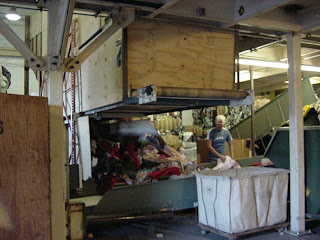
The conveyor belt where clothing and textiles get sorted then head up the line to be baled:

A worker on the sorting line:

The baler where clothing is compressed:

Baled textiles:

Price list and photos of the sales floor:
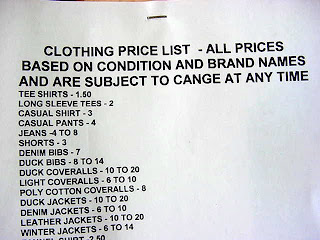

Photos of the 'sales floor'.

All garments are hung and the place is hyper neat.
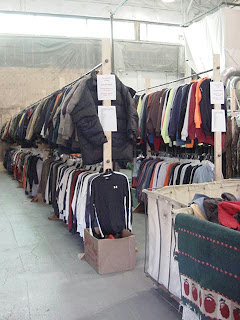

I saw many pairs of never worn fleece and flannel lined slippers:

Long johns, union suits, and bibs.
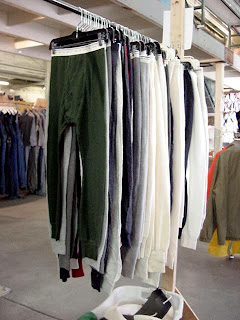

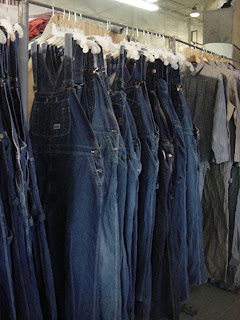
* As a fundraiser for Marti's garden I am talking with Remains about accepting donations of shoes and clothing. More info will follow.
1 comment:
Whoa. I want to go to there.
Post a Comment